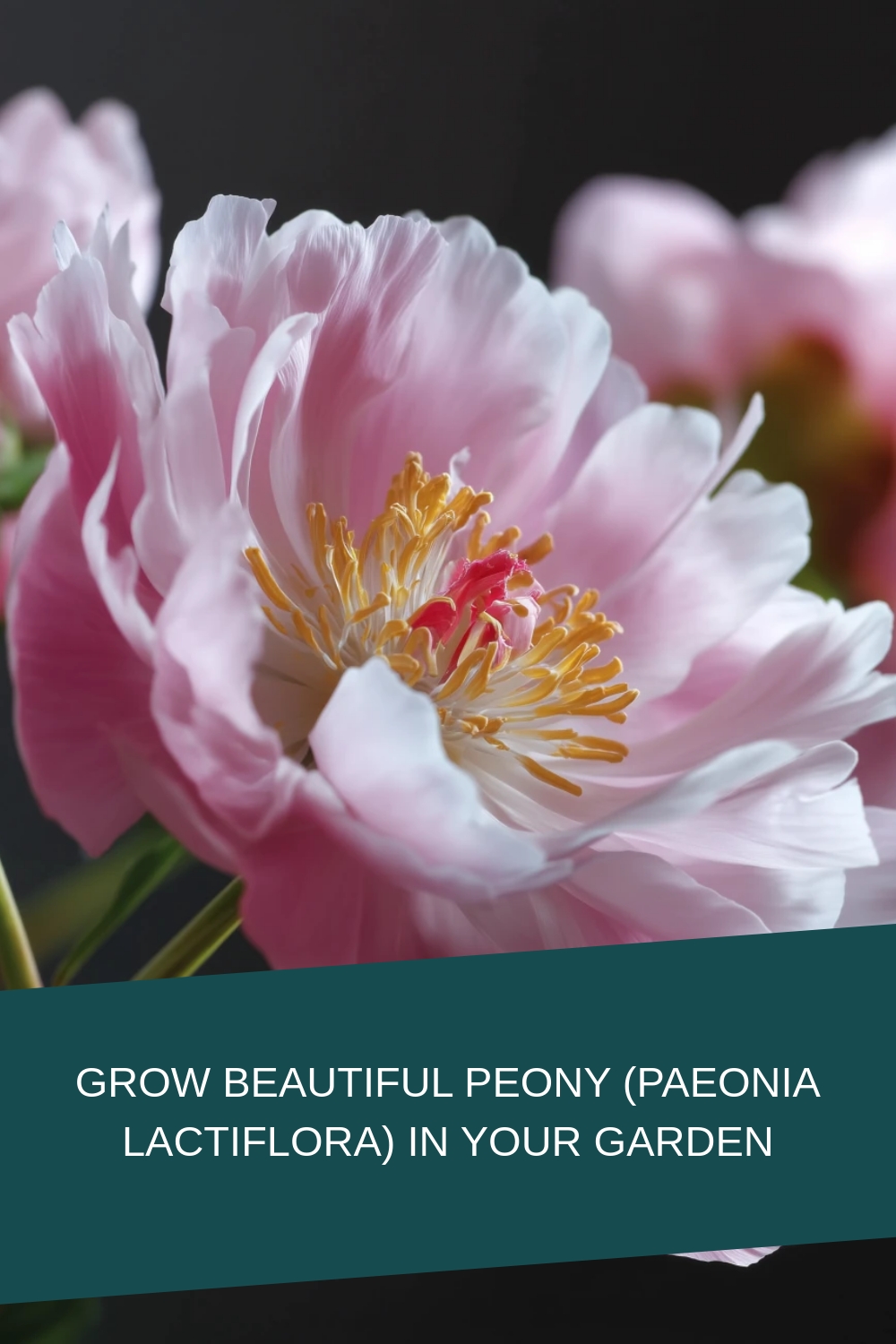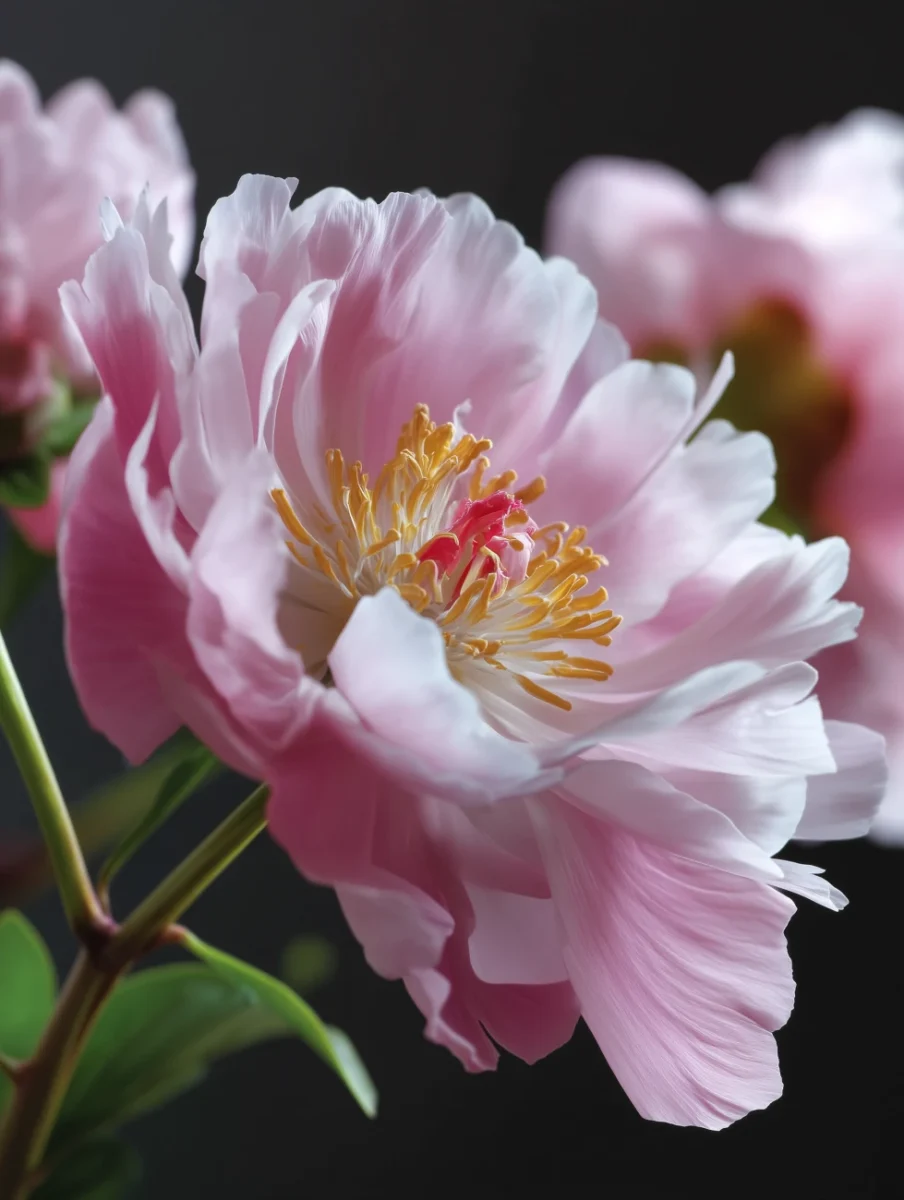
A Complete Guide to Cultivating these Spectacular Spring Bloomers
Peonies, scientifically known as Paeonia lactiflora, are stunning perennial flowers that light up gardens with their lush, romantic blooms in late spring and early summer.
These gorgeous plants feature large, bowl-shaped flowers in shades of white, pink, coral, and deep red. Their lush, deeply cut foliage provides structure even after flowering ends.
Native to central and eastern Asia, particularly China, peonies have been cultivated for centuries both for their ornamental value and for traditional medicine.

Peonies will grow and flower abundantly for decades when planted correctly in well-drained soil and full sun with at least six hours of daily sunlight. These long-lived perennials make excellent specimen plants in borders, work beautifully in cottage garden settings, and create stunning focal points when planted in groups.
The glossy, dark green foliage emerges in spring with reddish tints, developing into deeply divided leaves that provide an attractive backdrop for the spectacular blooms, which often carry a delightful fragrance that attracts beneficial insects.
Peonies are moderate to easy to care for once established, making them excellent investments for the garden. They do require some patience – taking 2-3 years to reach full flowering potential after planting. But, their minimal maintenance needs and remarkable longevity—often outliving their gardeners—make them worth the wait and the cost (they can be pricey to buy).
The key to success lies in proper initial planting at the correct depth and choosing a permanent location, as peonies resent disturbance and can sulk for years if moved.
Characteristics Of Peony

Peonies are renowned for their stunning, large blooms and lovely fragrance. These magnificent perennials establish themselves as garden favourites with their long lifespan and relatively low maintenance requirements once established.
Scientific Name And Synonyms
The primary scientific name for garden peony is Paeonia lactiflora. This is the most commonly cultivated species in home gardens. Other important species include Paeonia officinalis (European peony), Paeonia suffruticosa (tree peony), and Paeonia delavayi (Delavay’s tree peony).
In botanical literature, you might occasionally encounter older synonyms such as Paeonia albiflora, which was previously used for some white-flowered varieties now classified under P. lactiflora. The naming has been standardised in recent decades, with P. lactiflora firmly established as the correct scientific name for the common garden peony.
Meaning Of Scientific Plant Name
The genus name Paeonia has ancient origins, derived from Greek mythology. It honours Paeon, physician to the gods, who allegedly used the peony’s roots to heal Pluto.
The species name lactiflora combines two Latin words: “lacti” meaning milk, and “flora” meaning flower. This refers to the milky-white flowers found in many wild forms of this species.
This scientific name beautifully reflects both the cultural significance and physical characteristics of these beloved garden plants.
Common Names
Peonies are known by several common names across different regions and cultures. The most widespread is simply “peony” or “garden peony” in English-speaking countries. In British gardens, you’ll also hear them called “piney roses” in some regions, though they’re not related to true roses.
In traditional Chinese culture, where peonies have been cultivated for over 1,500 years, they’re called “mudan” (tree peonies) or “shaoyao” (herbaceous peonies) and are considered the “king of flowers.”
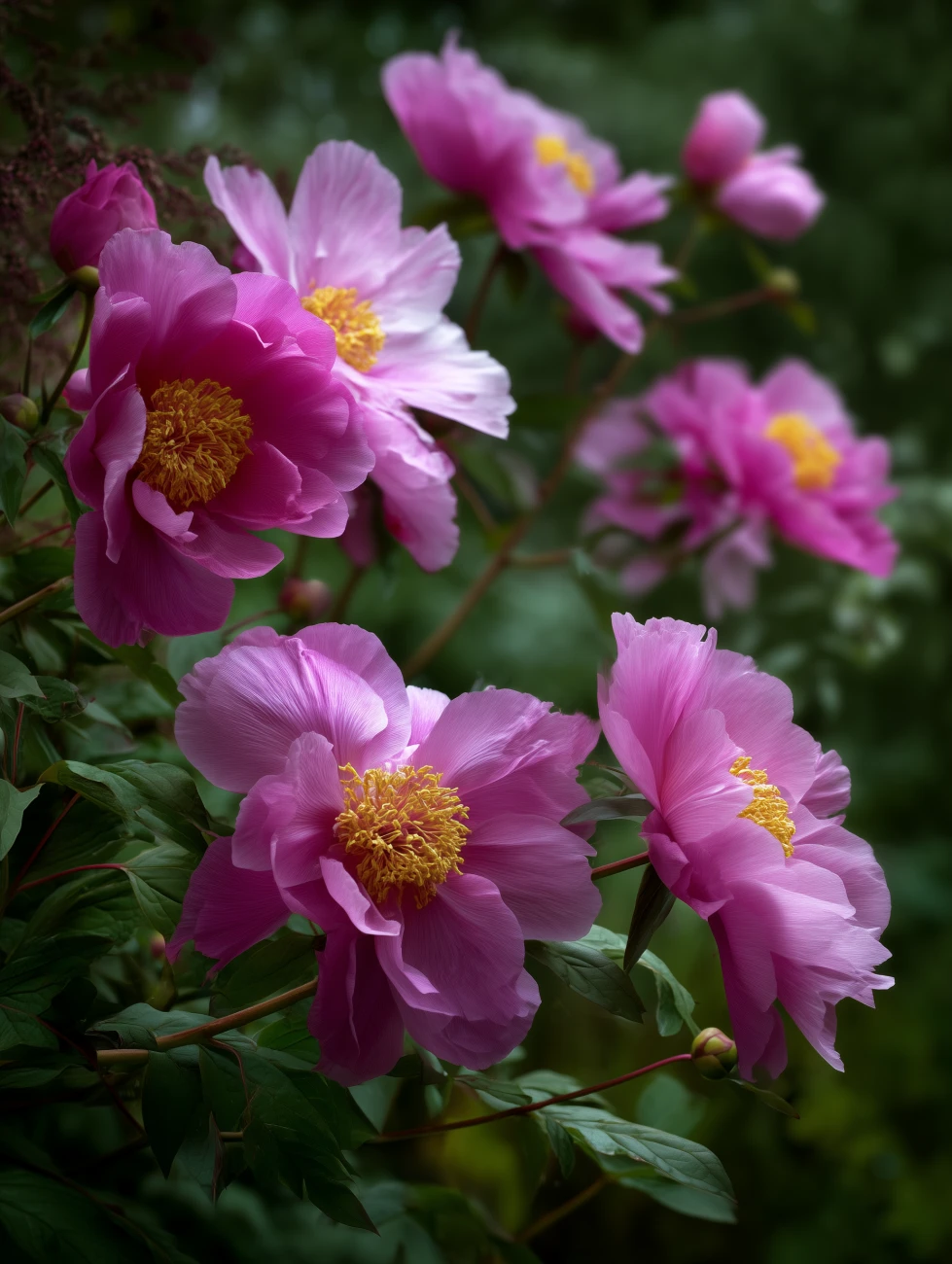
Plant Family
Peonies belong to the family Paeoniaceae, which is remarkably small, containing only the single genus Paeonia. This family was formerly classified within Ranunculaceae (buttercup family) but has since been recognised as distinct.
The Paeoniaceae family is ancient, with fossil records dating back 65 million years. What makes this family unique is its combination of woody and herbaceous growth habits within a single genus, which is uncommon in plant taxonomy.
Despite being a small family, Paeoniaceae includes approximately 33 species distributed across temperate regions of Europe, Asia, and Western North America. Their distinctive floral structure and biochemical properties set them apart from related plant families, supporting their classification as a separate family.
Type Of Plant
Peonies are long-lived perennial plants with different growth habits depending on the type:
Herbaceous peonies (P. lactiflora) die back completely to the ground each autumn, sprouting anew from their underground crown in spring. These are the most common garden varieties, with lush foliage and spectacular blooms in late spring to early summer.
Tree peonies (P. suffruticosa) develop woody stems that persist year-round, gradually forming a small shrub that can reach 1-2 metres in height. Unlike herbaceous types, they don’t die back completely in winter.
Itoh peonies (intersectional hybrids) combine characteristics of both types. They die back nearly to the ground like herbaceous varieties but produce more flowers with tree peony characteristics on stronger stems.
All types are remarkably long-lived, with well-established herbaceous peonies often surviving 50+ years with minimal care. Some specimens in gardens have been documented to live over a century!
Size
Garden peonies display considerable variation in size depending on type, cultivar and growing conditions:
Herbaceous peonies typically reach 60-90 cm in height with a similar spread. The foliage forms a rounded mound, with flowers held on strong stems above the leaves. Some compact varieties may reach only 45 cm, while taller cultivars can exceed 1 metre.
Tree peonies grow larger, gradually developing into woody shrubs 1-2 metres tall and 1-1.5 metres wide. They require more space to develop properly and display their magnificent blooms.
Itoh peonies generally reach intermediate sizes, typically 75-90 cm tall and wide.
The flowers themselves are impressively large, with many cultivars producing blooms 15-25 cm in diameter. Double-flowered varieties can create blooms so heavy they require staking. The substantial size of both plant and flowers makes peonies excellent focal points in mixed borders and dedicated cutting gardens.
How to Grow Peony in the Garden
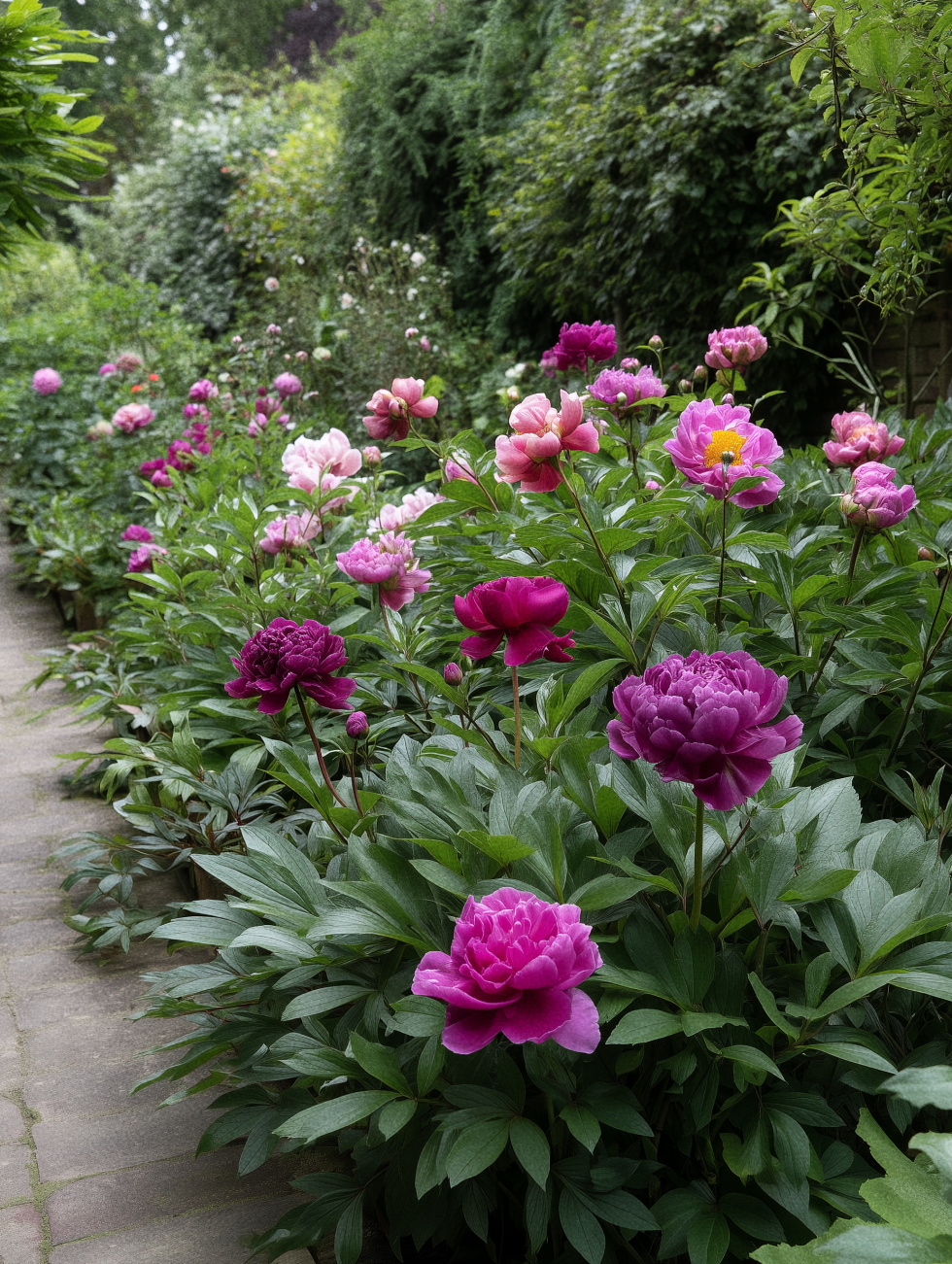
Peonies are magnificent perennial flowers that can thrive for decades when properly established. These stunning bloomers require specific conditions to perform their best, particularly regarding planting depth, sunlight exposure, and soil quality.
Light Requirements
Peonies adore sunshine and require plenty of it to produce their magnificent blooms. For optimal flowering, site your peonies in a position that receives at least 6 hours of direct sunlight daily. Full sun exposure encourages stronger stems and more abundant flowering.
While peonies can tolerate light afternoon shade in hotter regions, insufficient light will result in fewer blooms and potentially weaker stems. If you notice your established peonies producing fewer flowers over time, consider whether surrounding trees or shrubs have grown to cast more shade than previously.
When selecting a planting location, think long-term. Peonies dislike being moved, so choose a spot with consistent light conditions that won’t be shaded by growing trees in future years.
Temperature Requirements
Peonies are remarkably hardy plants that actually require a cold period to trigger proper flowering. Most varieties thrive in hardiness zones 3-8, making them suitable for much of the UK and cooler US states.
The cold dormancy period of winter is essential for peonies to reset their growth cycle and produce flowers the following year. Without this chilling period, blooms may be sparse or non-existent.
Spring frosts rarely damage peonies, though late freezes can affect developing flower buds. If severe frost is forecast when buds are forming, consider covering plants with horticultural fleece overnight.
During summer, peonies prefer moderate temperatures. In particularly hot periods, providing afternoon shade can help protect the flowers from scorching.
Soil and Feeding Requirements
Peonies thrive in fertile, well-draining soil with a neutral to slightly alkaline pH (6.5-7.5). Before planting, enrich your soil with organic matter such as well-rotted compost or aged manure to improve structure and fertility.
When planting, incorporate bone meal into the planting hole to support root development. This slow-release phosphorus source helps establish strong root systems that will sustain plants for years.
Avoid high-nitrogen fertilisers as these encourage lush foliage at the expense of flowers. Instead, opt for a balanced or low-nitrogen formula specifically designed for flowering plants.
For established peonies, apply a light dressing of compost around the crown in early spring, being careful not to bury the crown itself. A sprinkle of balanced fertiliser (10-10-10) in spring can also support healthy growth and flowering.
Water and Humidity Requirements
Proper watering is crucial for peony success, particularly during their first two years. Newly planted peonies require deep, regular watering to establish extensive root systems. Once established, they become more drought-tolerant but still appreciate consistent moisture.
During flowering season, provide approximately 2.5cm of water weekly if rainfall is insufficient. Deep watering encourages roots to grow downward, creating more resilient plants. Avoid frequent shallow watering which promotes surface roots.
Good air circulation is essential for peonies to prevent fungal issues. Avoid overhead watering which can encourage diseases like botrytis blight. Instead, water at soil level in the morning so any splashed foliage can dry quickly.
In particularly dry periods, a 5cm layer of organic mulch will help retain soil moisture. Keep the mulch away from the crown to prevent rot.
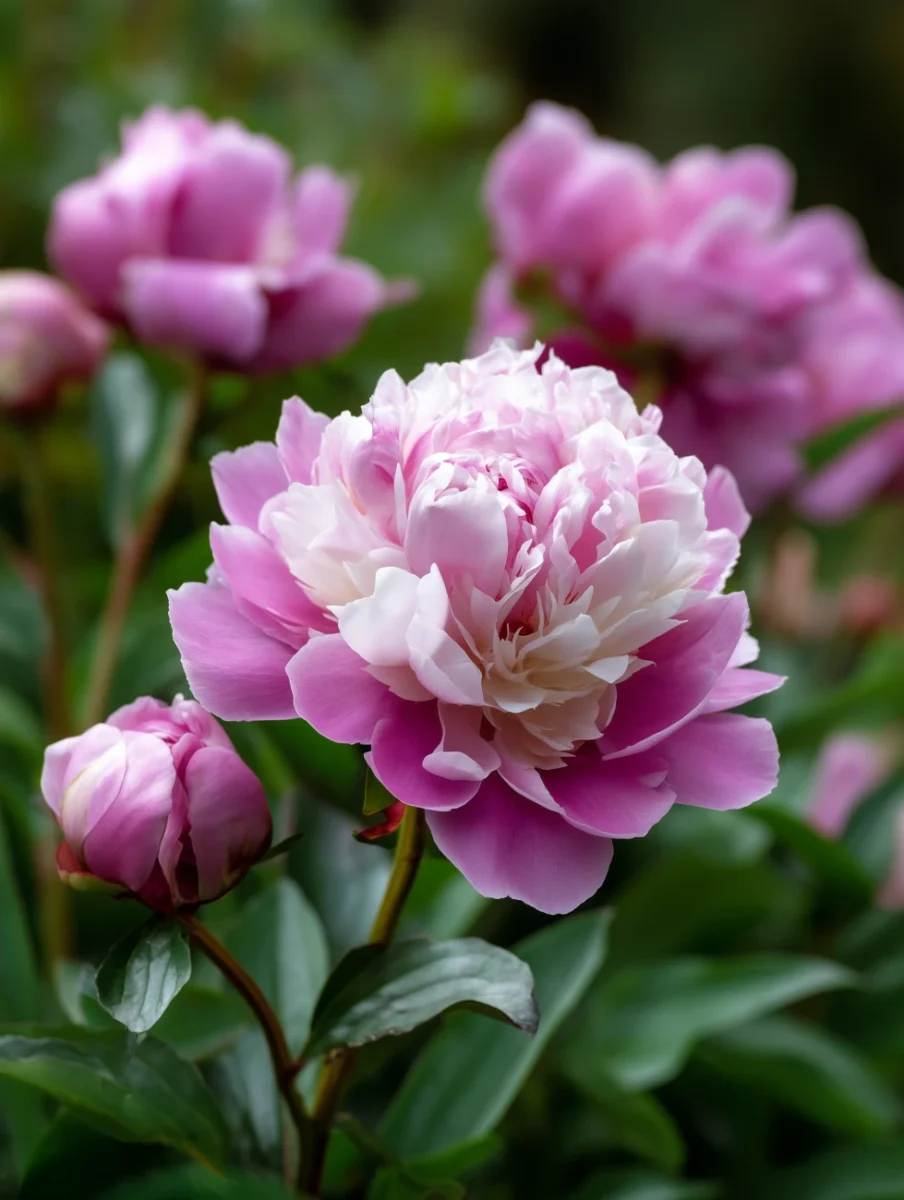
Pruning
Pruning peonies properly helps maintain plant health and prevent disease. In autumn, cut herbaceous peony stems to ground level after the first frost has blackened the foliage. This removes potential disease harbourage and keeps the garden tidy.
When cutting flowers for display, never remove more than one-third of the stems from a plant. The remaining foliage is crucial for photosynthesis and storing energy for next year’s growth.
During the growing season, remove any diseased or damaged foliage promptly. If you notice powdery mildew or leaf spots, cut affected areas away and dispose of them in household waste rather than compost.
For tree peonies, pruning differs slightly. Only remove dead or damaged wood in early spring, making cuts just above an outward-facing bud.
Propagation
The most reliable method for propagating peonies is through division, best done in autumn (September to October). Start by carefully lifting the entire plant with a garden fork, working from the drip line inward to avoid damaging roots.
Wash away soil to reveal the root structure and crown. Using a sharp, sterilised knife, divide the crown into sections, ensuring each piece has 3-5 eyes (growth buds) and healthy roots attached. Smaller divisions may take longer to establish and flower.
Allow the cut surfaces to dry for a few hours before replanting at the correct depth. Peonies planted too deeply will grow but may not flower well. The eyes should be just 2-5cm below soil level.
Be patient—divided peonies may take 2-3 years to resume normal flowering. Alternatively, potted peonies can be purchased from garden centres for more immediate results, though they’re typically more expensive than bare-root options.
Winter Care Of Peony
Peonies are remarkably winter-hardy and actually require the cold period for proper bud formation. Once established, they need minimal winter protection in most UK gardens.
After cutting back herbaceous varieties in autumn, apply a light 5cm layer of mulch around (but not over) the crown. This protects the roots while allowing the vital cold period to reach the crown. Materials like straw, leaf mould or well-rotted compost work well.
For newly planted peonies, additional mulch may be beneficial during their first winter, particularly in exposed gardens. Remove this extra protection in early spring to prevent crown rot as temperatures rise.
Tree peonies benefit from protection against harsh winds. Consider erecting a simple windbreak of horticultural fleece if your garden is particularly exposed. Remove this promptly in spring when new growth begins to prevent stem weakness.
Common Problems And Solutions
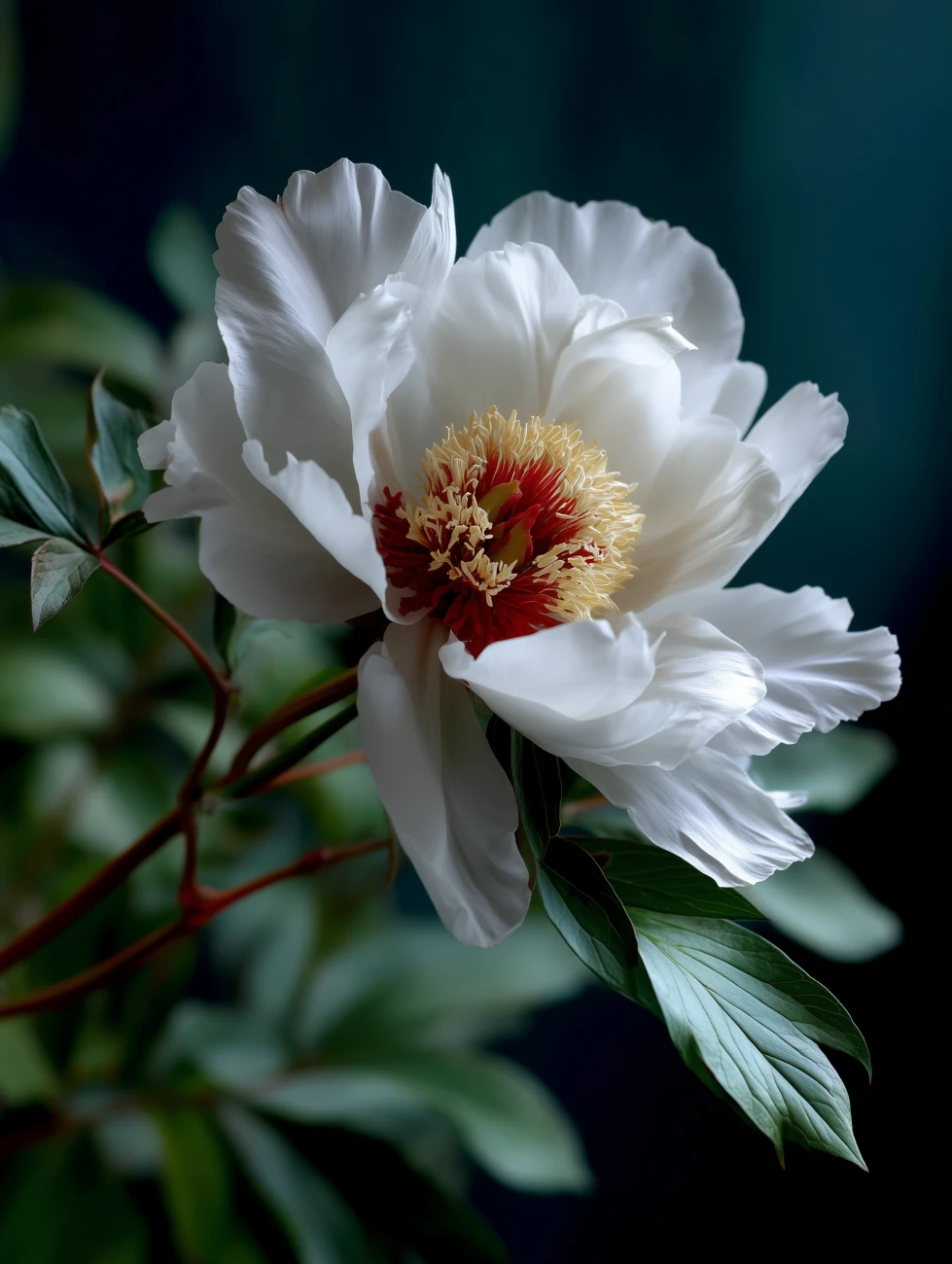
Peonies are generally hardy plants, but they can face several challenges. Being aware of these issues will help you maintain healthy, vibrant blooms.
Flopping Stems
One of the most frustrating peony problems is when their heavy blooms cause stems to flop over, especially after rain. To prevent this:
- Install support rings or stakes early in the growing season
- Plant varieties with stronger stems like ‘Sarah Bernhardt’ or ‘Bowl of Beauty’
- Avoid over-fertilising, which can cause weak, lanky growth
Root Rot
Peonies hate wet feet and can develop root rot in poorly drained soil.
- Plant in well-draining soil with added grit if needed
- Avoid overwatering, particularly in heavy clay soils
- Remove and destroy affected plants to prevent spread
Fungal Diseases
Botrytis blight (grey mould) is a common fungal disease that appears as brown spots on leaves and stems or causes buds to turn brown and fail to open.
- Improve air circulation by thinning stems
- Remove infected plant parts immediately and dispose of them (don’t compost)
- Apply a fungicide specifically labelled for peonies when symptoms first appear
Ants on Buds
Ants crawling over peony buds are often misunderstood as pests, but they’re actually harmless.
- Ants are attracted to the sweet nectar on buds
- They don’t damage the plants and may even help by keeping other pests away
- Simply shake them off before bringing blooms indoors
Common Pests
While peonies aren’t particularly susceptible to pests, they occasionally attract:
- Thrips (cause streaked or speckled petals)
- Scale insects (appear as small bumps on stems)
- Nematodes (cause stunted growth)
Regular inspection and prompt treatment with appropriate insecticides can keep these issues under control.
Martin Cole has been an avid plant lover and gardener for more than 20 years and loves to talk and write about gardening. In 2006 he was a finalist in the BBC Gardener of the Year competition. He is a member of the National dahlia Society.
He previously lived in London and Sydney, Australia, where he took a diploma course in Horticultural studies and is now based in North Berwick in Scotland. He founded GardeningStepbyStep.com in 2012. The website is aimed at everybody who loves plants or has been bitten by the gardening bug and wants to know more.
Gardening Step by Step has been cited by Thompson and Morgan, the UK’s largest mail order plant retailer, as a website that publishes expert gardening content.


